With much hype and anticipation, we took Kel-Tec CNC’s RFB forward-ejecting bullpup rifle to the range 18 months ago to compare it with other bullpup-style rifles we’ve reviewed. This being the only 30-caliber bullpup we’ve tested so far, most of our shooters were eager to get behind the scope and send rounds downrange. Taking any bullpup to the range always draws some attention, and the Kel-Tec RFB was no different. The gun has a striking overall appearance, especially with the Nikko-Sterling 3-10×42 Nighteater scope we mounted on ours.
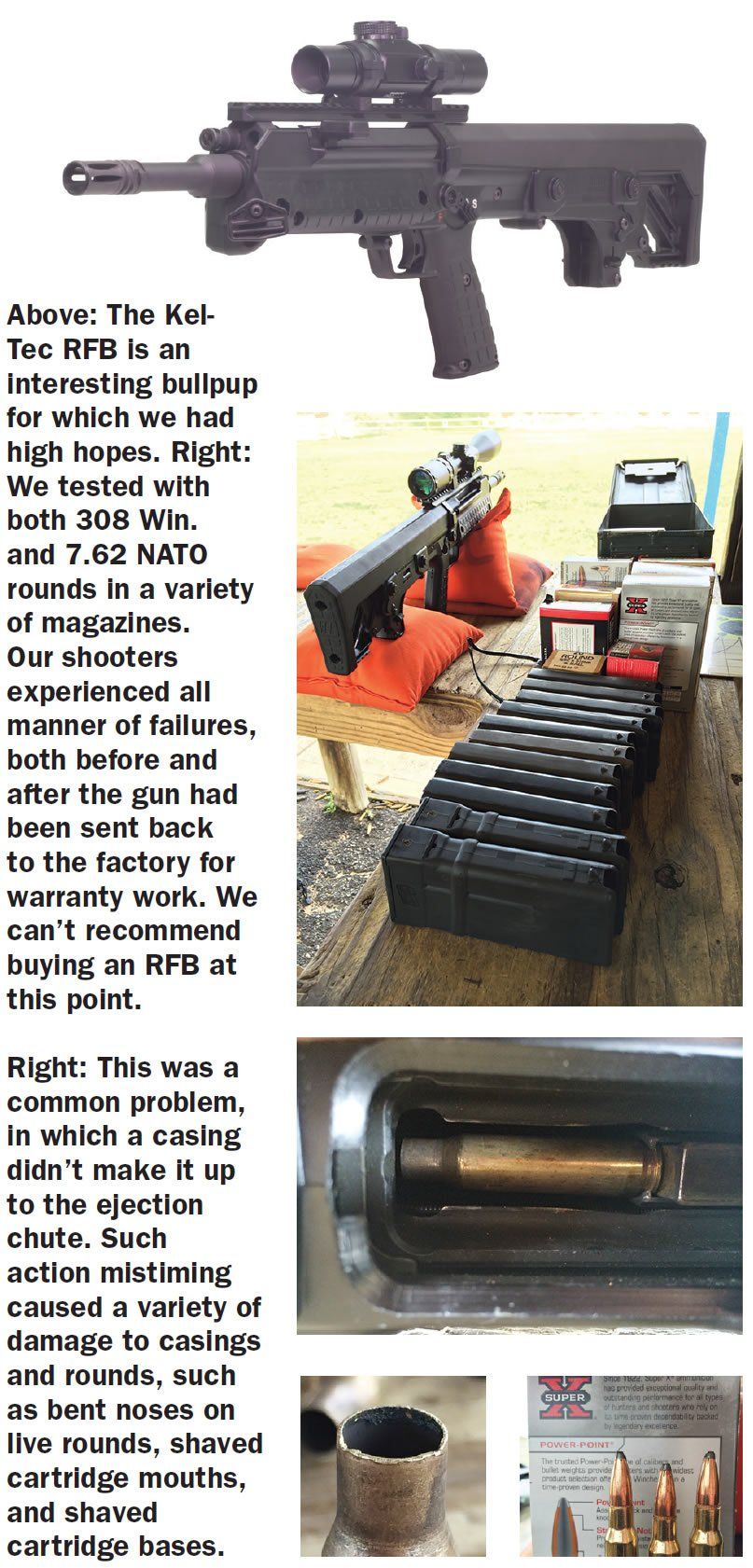
We started out with Winchester 7.62×51 NATO rounds and sighted in the rifle, finding that it jammed about every third round, although all of these were cleared by ejecting the magazine and cycling the action a few times. These malfunctions were not consistent — we had failures to eject, failures to load, and failures to fire, though most involved a round either falling out of the magazine well or a casing sliding down the front ejection chute.
At first, we blamed the magazines and ammo, so we switched both when we moved out to 100 yards to test accuracy. After trying eleven different magazines and nine different ammunitions of both 7.62×51 NATO and .308 Win. with ongoing failures, we decided the issues were not with the ammo or magazines.
Despite the malfunctions, we found the RFB to be an accurate rifle, with an average grouping just over 2 inches for all ammo types.
Also, disassembly was relatively simple, requiring only a punch or bullet tip to remove four pins. At this point, the shooter can decide on which side to put the controls because they are all ambidextrous. Switching the charging handle side does require field-stripping the rifle, but everything else is ready to go lefty right away.
The ergonomics of the RFB are only average, in our view, because although it is comfortable on the shoulder and takes very little time to become accustomed to, fighting the gun’s recoil can give you a swollen cheek. We would recommend some kind of pad on the comb to provide both comfort and a consistent head placement.
To understand why this rifle got the grade it did, we need to look into the fundamental design of the action. Once a round is fired, the casing is pulled out of the chamber located in the buttstock, then lifted straight up over the chamber and pushed forward into the chute that runs out the front of the rifle, all this while the next round is being pulled from the magazine and loaded into the chamber.
The major, fun-stopping failure we had was when a casing was pushed forward before it got to the ejection chute and jammed on the frame and edge of the chute. This jammed the action to the point that it wouldn’t cycle to clear the round, and we had to almost completely disassemble the rifle to be able to pry out the casing. After 30 minutes of frustration, a Leatherman tool, and some serious effort, we finally had the round cleared.
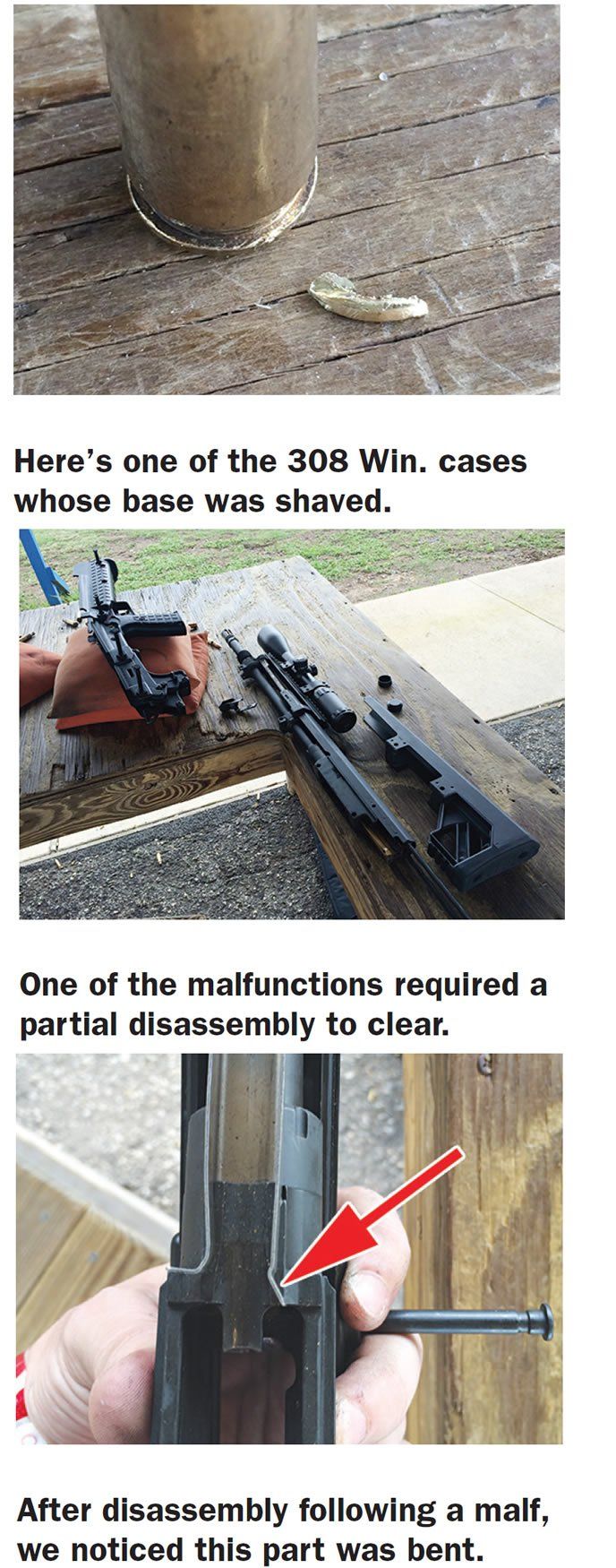
Then when we tried to reassemble the rifle, we noticed that the left wall of the chute had been bent to 90 degrees and prevented the spring from passing by. After more work to bend this back into place, we finally got the rifle reassembled so we could take a few more pictures. To recap, at this point of the test the RFB had produced multiple failures to fire, load, and eject, and one malfunction was so bad that it seized the action to the point of needing a full disassembly to clear. So we shipped it back to Kel-Tec for warranty work.
Following its return from Kel-Tec, we took the RFB back out to the range. Four different shooters using 10 different ammo brands and as many different magazines still had similar issues as before the work, minus the one major ejection failure that seized up the action. We encountered many failures to load with a round stuck halfway between the magazine and the chamber. This occurred with every type of ammunition in all of our magazines. We experienced more failures to eject with the casing still sitting in the chamber, and although these were easily cleared by ejecting the magazine and cycling the action a few times, this creates a very frustrating day at the range when it happens at least twice per magazine. There appeared to be no pattern as to when or what kind of failure we would encounter, other than we never strung together more than five consecutive rounds without something going wrong. We did not have any more major failures that required full disassembly, but it appeared the issue with regular failures was not resolved.
Our Team Said: Overall the Kel-Tec RFB rifle was accurate and handled well, but its constant function problems made us give up on it. Perhaps the RFB will become a more polished product in the future, but for now, based on our experience with one, we can’t recommend buying it.

























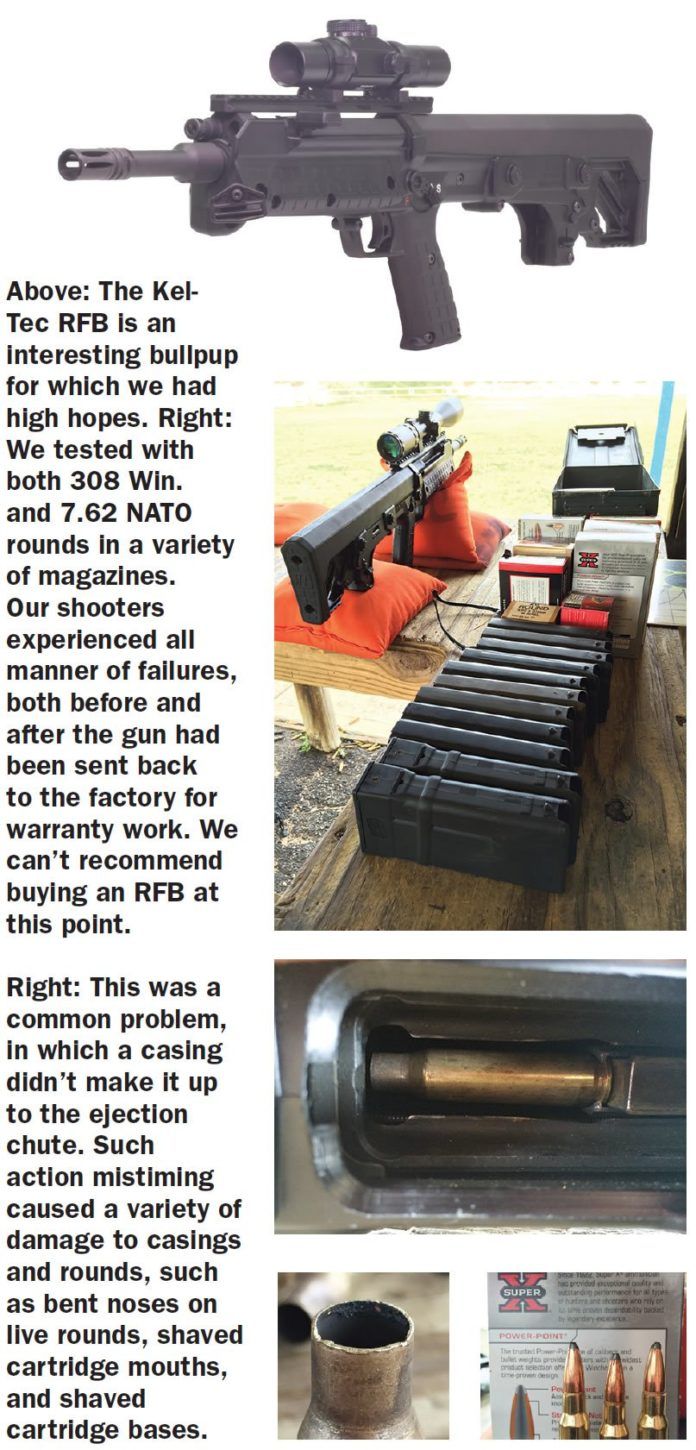
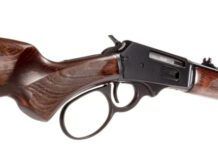
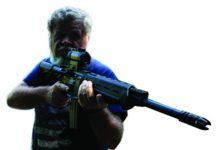

I have one of these,
UntIll gas was adjusted, ran poorley, comes with gas open all the way, heavy recoill breaks things inside and hurts to shoot, after dialed in hundreds of rounds no issues